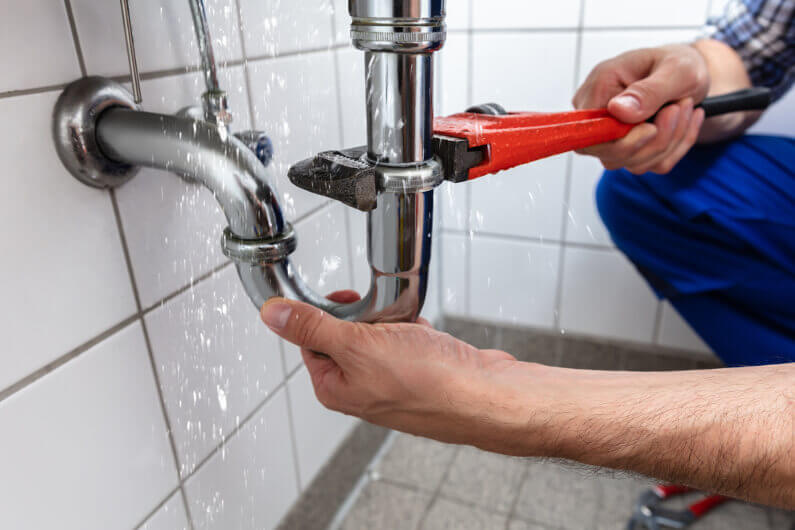When planning a renovation, the question arises of what material the pipes in your bathroom should be made of. It is not easy for a person who is far from plumbing in everyday life to navigate the construction market, since there you can find pipes made of various materials: steel, copper, polyethylene, polyvinyl chloride, polypropylene, metal-plastic, etc. There are many options, but you need to choose only one in bathroom stores near me. To make the right choice in each case, the bathroom vanity store New Bathroom Style offers information about the pros and cons of water pipes made from different materials.
Iron pipes
The properties of pipes made of this material are well known to all of us, since not so long ago, all plumbing communications were made only from this material. A definite plus is high strength. Such pipes can supply water with high temperatures and significant pressure. The estimated service life is about 25 years.
The disadvantages include the fact that the threads quickly rust from condensate with a cold water supply. When using welding, the zinc coating burns out. With a hot water supply, such pipes deteriorate from the inside. According to building codes and regulations, threaded connections must not be used for hidden installation in walls.
Copper pipes
Copper pipes are suitable for flush mounting. They are durable, practical, environmentally friendly, withstand high temperatures during soldering, do not change their properties during long-term operation. The main disadvantage is that they are costly. Unfortunately, they are subject to electrolytic and chemical corrosion. In a humid environment, crossing a copper pipe with an electrical wire may cause a leak at that point.
When hidden wiring, copper pipes require protection from contact with the stone. Otherwise, when the line expands, friction with the rock occurs, which leads to damage.
Polyethylene pipes
Elastic, but it is advisable to use them only for cold water supply. Such pipes do not lose their elastic properties at low temperatures, and therefore they can be used even in suburban buildings with intermittent heating. Even if the water in such a pipe freezes, the pipe’s integrity will not be violated. There are also pipes made of cross-linked polyethylene – they are more durable and withstand thermal loads more efficiently. “Cross-linked” – means a confident, ordered configuration of linear molecules, making it possible to obtain high-density polyethylene. “Cross-linking” is achieved by processing polyethylene with intense ionizing radiation. Products made of cross-linked polyethylene can be used to transfer hot water.
Metal pipes
In general, metal-polymer pipes (metal-plastic) are a three-layer structure: the main pipe is made of cross-linked polyethylene (modified polyethylene with a closed spatial molecular structure), which has good heat resistance, excellent hygienic properties and high throughput, a layer of aluminum foil with a thickness of 0.2–0 .5 mm and a protective sheath made of polyethylene. The latter creates high mechanical strength and resistance to internal pressure.
The pipe is easy to install. Bending up to three to five diameters is allowed. Two types of connections have been developed – press and collet.
The press connection, without a doubt, is the most reliable. It allows hidden (that is, in hard-to-reach cavities or a strobe) and opens the gasket. It requires expensive equipment (crimping press and pressing tongs), which, in addition to high cost, involves binding to a specific pipe and specific fittings (metal pipe connectors).
The collet connection is very similar to the technology for fastening steel pipes, although it has its nuances. One of them is unpleasant – due to temperature deformations of the pipe, the connection may loosen, which makes it necessary to pull the pipeline after the first year of operation. It’s not so bad if links are available. In addition, this can be compensated by a minimum number of connections and the use of so-called collector wiring. With this scheme, the consumption of pipes increases, but the reliability of the pipeline also increases.
Cons: the connections narrow the diameter a little. The quality of the pipes depends very much on the manufacturer.
Polypropylene pipes
This unique plastic is suitable because it has a melting point of +176 degrees, which means that boiling water can be entirely fearlessly driven through the pipe from it. In addition, PPR pipes withstand significant pressure. Today they work at 10 atmospheres and a temperature of 95 degrees!
Polypropylene is chemically immune to many aggressive environments, is easily washed during operation, maintaining hygienic properties throughout the entire service life, which, according to all construction standards, is 50 years.
